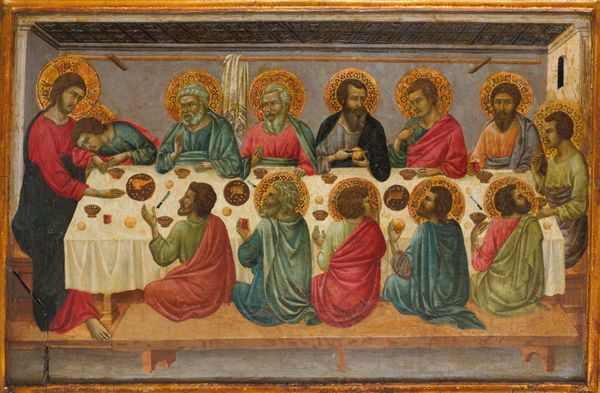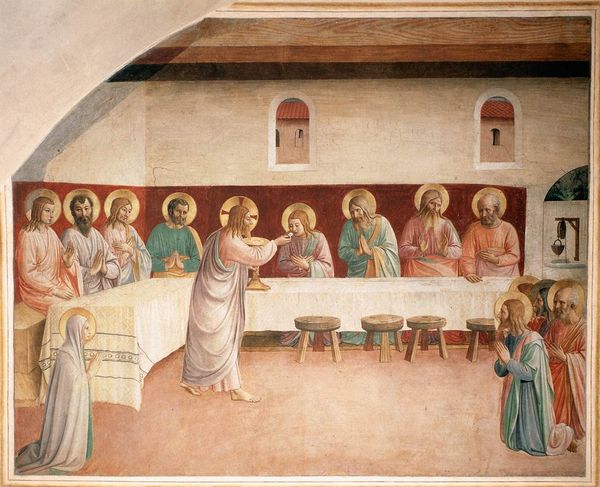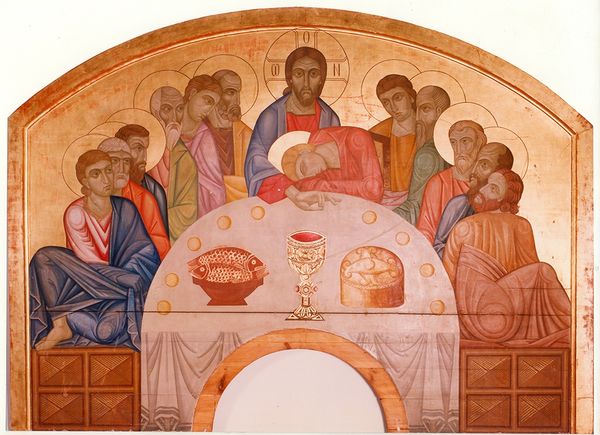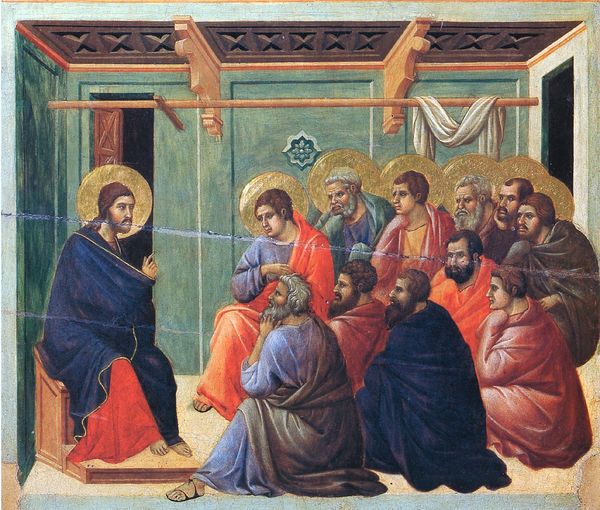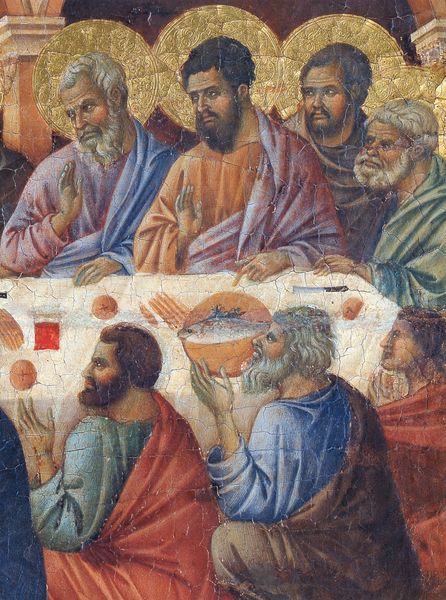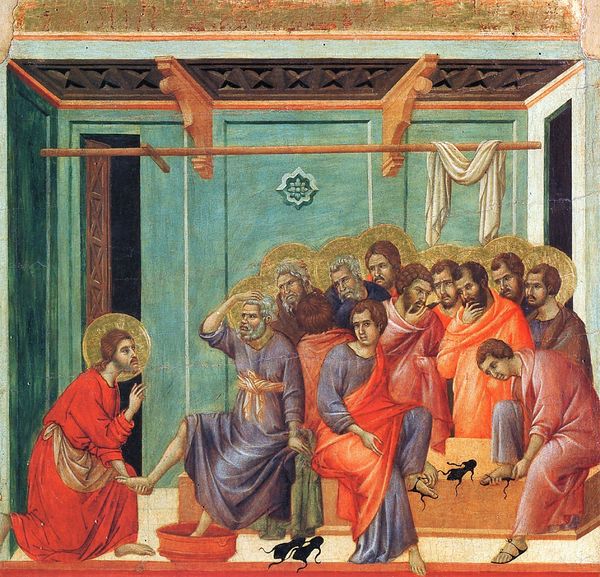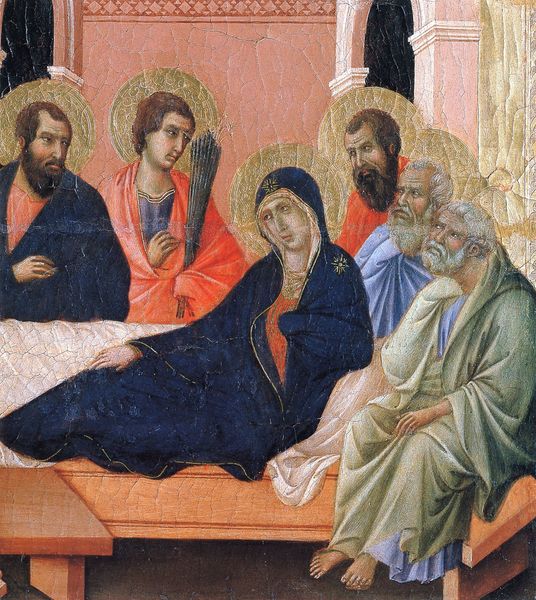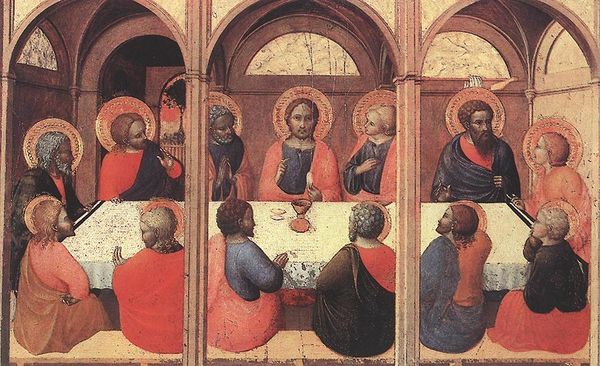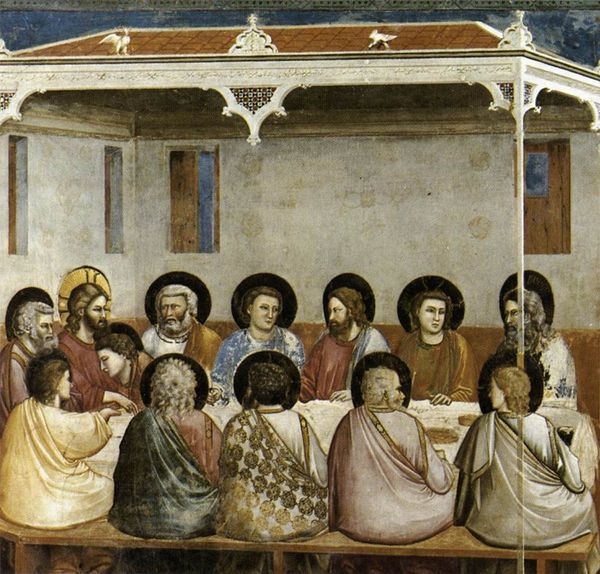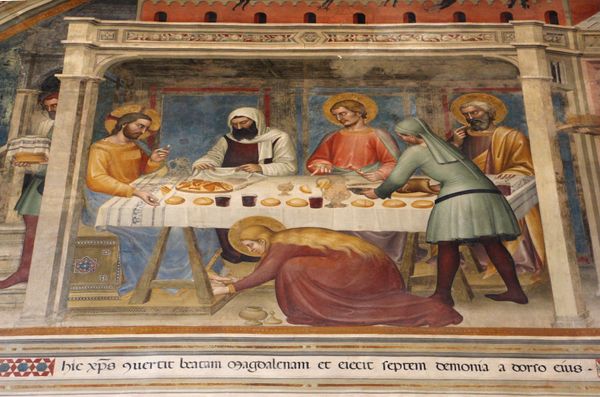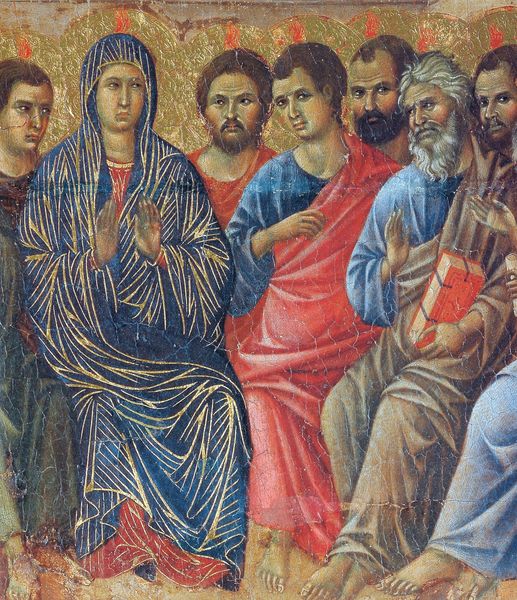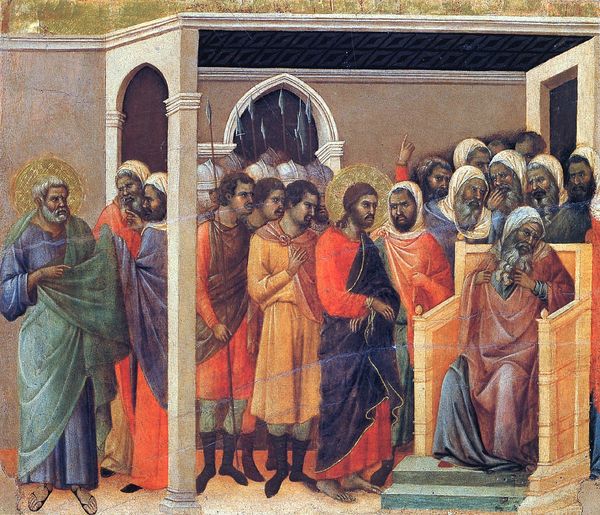
tempera, painting
#
portrait
#
medieval
#
tempera
#
painting
#
sienese-school
#
figuration
#
oil painting
#
jesus-christ
#
christianity
#
history-painting
#
italian-renaissance
#
portrait art
#
christ
Copyright: Public domain
Editor: This is "The Last Supper," a tempera painting by Duccio, from 1311. The figures all in a row give me a sense of formality, and it’s fascinating how Duccio created depth without relying on linear perspective the way later Renaissance artists did. What strikes you most when you look at it? Curator: It’s the symbolic language Duccio employs that I find captivating. Notice how the halos, the golden circles around the heads, signify divinity, connecting us to a long history of depicting holiness across various cultures. These aren't merely decorative; they carry immense cultural weight. How do you interpret the differing expressions? Editor: Some of the apostles look shocked or worried, especially considering what’s about to happen. I hadn't thought about the halos in that broader context, though. It's interesting that you see these kinds of symbols reappearing in different contexts throughout history. Curator: Exactly. And consider the table itself, the food presented. Each element potentially alludes to future events, promises, or even betrayals. It is visual storytelling operating on multiple levels, asking us to remember and to anticipate simultaneously. How does the painting engage with the viewer's memory of the biblical narrative? Editor: It's like the painting expects you to already know the story, and uses these little clues to add layers to that understanding. The more familiar you are with the source material, the more enriching the experience becomes. Curator: Precisely. It becomes a collaborative act of meaning-making across centuries. Duccio isn't just depicting a scene; he's activating a collective memory, inviting reflection on faith, betrayal, and sacrifice. Editor: It’s given me a fresh appreciation for how much cultural information is embedded within these early Renaissance paintings. Curator: And how relevant these symbols still are to our world today, if you know how to read them.
Comments
No comments
Be the first to comment and join the conversation on the ultimate creative platform.
